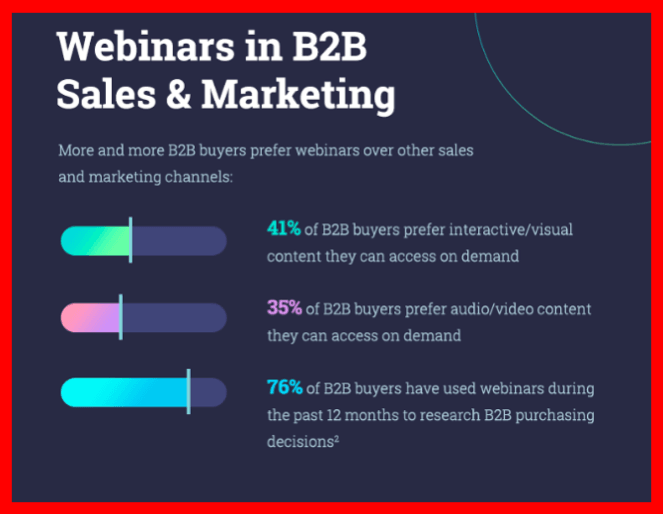Back in 2014 — can you believe it’s been five years already? — the marketing world was having an industry-wide internal debate about inbound versus content marketing, and which practice serves the other.
HubSpot, the company that coined the term “inbound marketing,” publicly claimed content marketing serves inbound. The founder of the Content Marketing Institute (CMI) countered by saying inbound is a subset of content marketing.
Here’s what was missing from the 2014 conversation: an awareness of the pressure we marketers felt to prove content marketing ROI in our own departments by year’s end. Many of us had spent precious time, funds, and energy creating content to build awareness and generate leads, handing responsibility off then to the sales and service departments so we could get back to creating more “interest stimulating” stuff to post. Many marketers had largely missed the customer retention power of content marketing.
Today, the conversation has shifted from whether content or inbound marketing is primary to how the two separate but related disciplines can interact and complement each other to generate ROI. To that end, brands are discovering content marketing’s potential as a powerful customer retention tool. Here are just a few of their strategies.
Live and In-Person Events
In sharing his origin story with LinkedIn, Andy Crestodina, co-founder and CMO of Orbit Media, says he first “needed to learn search, and later, content marketing,” signifying a fundamental difference between the two.
That got me. In a world full of marketers who still use the two terms interchangeably, Andy had something to say about the broader capacities of content marketing. Had he too seen content retain customers as well as it had served the goals of search? If so, in what way?
I pinged him to ask.
“This might surprise you,” he began, “live events are an awesome content format for retention. If a good chunk of your customers are in your geography, try creating a live event.”
Sounded logical, of course, but did he have any examples of in-person events actually working? Turns out, yes: He was very familiar with this marketing medium.
“We’ve done a monthly event for nine years. It’s called Wine & Web, and it combines teaching and networking,” Crestodina continued. “The results for both sales and retention have been huge for us.”

Image attribution: Kelsey Chance
Online Communities
Many content marketers praise the LEGO brand for its feature films and publications, which are indeed powerful content marketing examples. But what jazzes the kids I know is the company’s online ideas hub called, aptly, LEGO Ideas. Here, young innovators can submit their own ideas for LEGO sets and vote on the submissions of others, in the hope of someday seeing their own idea on toy-store shelves. The collaboration combined with competition makes for an emotional hook every parent can confirm.
Communities-as-content isn’t a new idea, but targeting those buyers whose hands are already all over your product is a brilliant way to increase content marketing ROI without chasing another new lead gen tactic.
Maximization Webinars and Tools
Personal finance brand YNAB (You Need a Budget) invests heavily in motivating customers to get the most out of their product. Every day, they host small, live, personal online classes that allow attendees to interact in real time with the YNAB rep and fellow budgeters.

Image attribution: Wes Hicks
The webinars are short, so you can squeeze a class into your morning commute or workout. They’re also recorded, which means customers who get interrupted mid-class can catch up later. While the brand may be tempted to route funds to more traffic-generating content, focusing on their customers’ financial success more than pays off (pun intended).
Another prime example of a customer retention marketing strategy is the hyper-relevant information mirrored back to all drivers who use the Snapshot device from Progressive Insurance. It’s a program customers appreciate, as safe behavior tracked through this app is rewarded with sizeable discounts on insurance premiums. This technology also helps to inform marketing efforts through its key insights on customer’s driving habits.
Through Snapshot, the brand enjoys:
- Permission to collect and analyze gobs of data
- Potential reciprocity of having given a substantial gift ($700 million in discounts to date)
- Motivated customers — drivers who have another reason to behave safely behind the wheel
- A creative new revenue center. McKinsey consultants recently observed that marketing tech like this can be monetized into its own business unit to (strategically, of course) serve other insurers.
So yes, content can and does achieve the goals of inbound marketing. But content can do so much more to engage, wow, and eventually multiply the people your funnel brings in.
User-Generated Contributions
Customer loyalty programs (think birthday discounts, referral perks, and gamified spending motivators) are great. But how can content play a role in a customer retention marketing strategy? By turning buyers into co-creators, of course!
Tarte Rewards by Tarte, a cosmetics and skincare brand, incentivizes customers to earn online store credit not just by spending more, but by leveraging selfies and social engagement that feature the products they’ve purchased.
Much like how beauty brands utilize influencers, Tarte has empowered its own customers to act as advocates and provide authentic user-generated content. This content is powerful, in that it:
- Promotes a product and builds brand awareness when users share their experiences
- Builds brand confidence when products are shown on real consumers
- Boosts social engagement, as consumers get competitive and creative in showing how they’re using the products
- Provides marketing content that’s original, authentic, and visual—often even video-based—which showcases products in the most compelling way
- Displays brand loyalty, since buyers are unlikely to invest their own time, energy, and creativity into promoting a product on social unless it’s that good
Keep in mind that the smaller, more intimate following each shopper brings can, when combined, be much more powerful than a disengaged or artificial audience.
Awards for Customer Retention
Competition as content? You bet. Brand-hosted annual awards are one of the most creative, effective content marketing tactics.
One of the best B2B examples of this is the Life Science Industry Awards, originally initiated by industry publication The Scientist and now hosted by BioInformatics Inc.
The sponsor and its divisions provide research and advisory services to support the life science, analytical instrument, and diagnostics industries. But the firm regularly stops to take the pulse of its voting insiders (all scientists) by polling them to celebrate the “rock stars” of life science product manufacturers and suppliers. A top determinant of ranking in the awards? Customer loyalty and satisfaction. Awards become a means of taking already-engaged customers and making them even more invested in the brand.
The Heart of Content Marketing
Content marketing has evolved far beyond a play to increase brand awareness. Today, we coordinate annual industry awards, conduct live interactive webinars, host forums, personalize mobile apps, invite clients over for wine once a month, and even leverage buyers’ selfies. These are all ways content marketing can serve customers from attraction through to loyalty, and even into advocacy.
Robert Rose of Content Marketing World says getting content to spur customer retention is about more than just focusing at the top of the funnel. It’s about meeting consumer needs—not alienating them once you’ve caught their attention.
“The basis of our content marketing strategy once was how much can we create in order to ‘get found.’ But that’s where many businesses sort of stopped. They didn’t really explore any more deeply what content marketing could provide by the way of marketing insight into those personas or into those customers once they get deeper into the funnel,” he explains. “We know a lot of companies that are amazing at inbound marketing, or the top of the funnel stuff, and they are absolutely horrible at customer retention, and they are churning through customers like nobody’s business.”
Today, many marketers still consider the terms “inbound” and “content marketing” interchangeable. But content marketing achieves dozens of business goals, and inbound traffic is only one of them.
“SEO is a subset of content marketing,” Crestodina stressed in our interview. “Organic search is one of the three big promotion channels for content. The other two are social and email.
“The content marketer does three things (to focus on) all day long: create, promote, and measure,” he says. “Not all content strategies have an SEO component, but most do. Why? Because it’s a very durable source of qualified visitors.”
Empowering your customers to support your brand on social is a home run marketing strategy. But by taking the time to meet with them, either in person or through a live web event, and listening to their needs, customer retention gets a whole lot easier because consumers are always more keen to support a brand that gets them and goes the extra mile.
For more stories like this, subscribe to the Content Standard newsletter.







